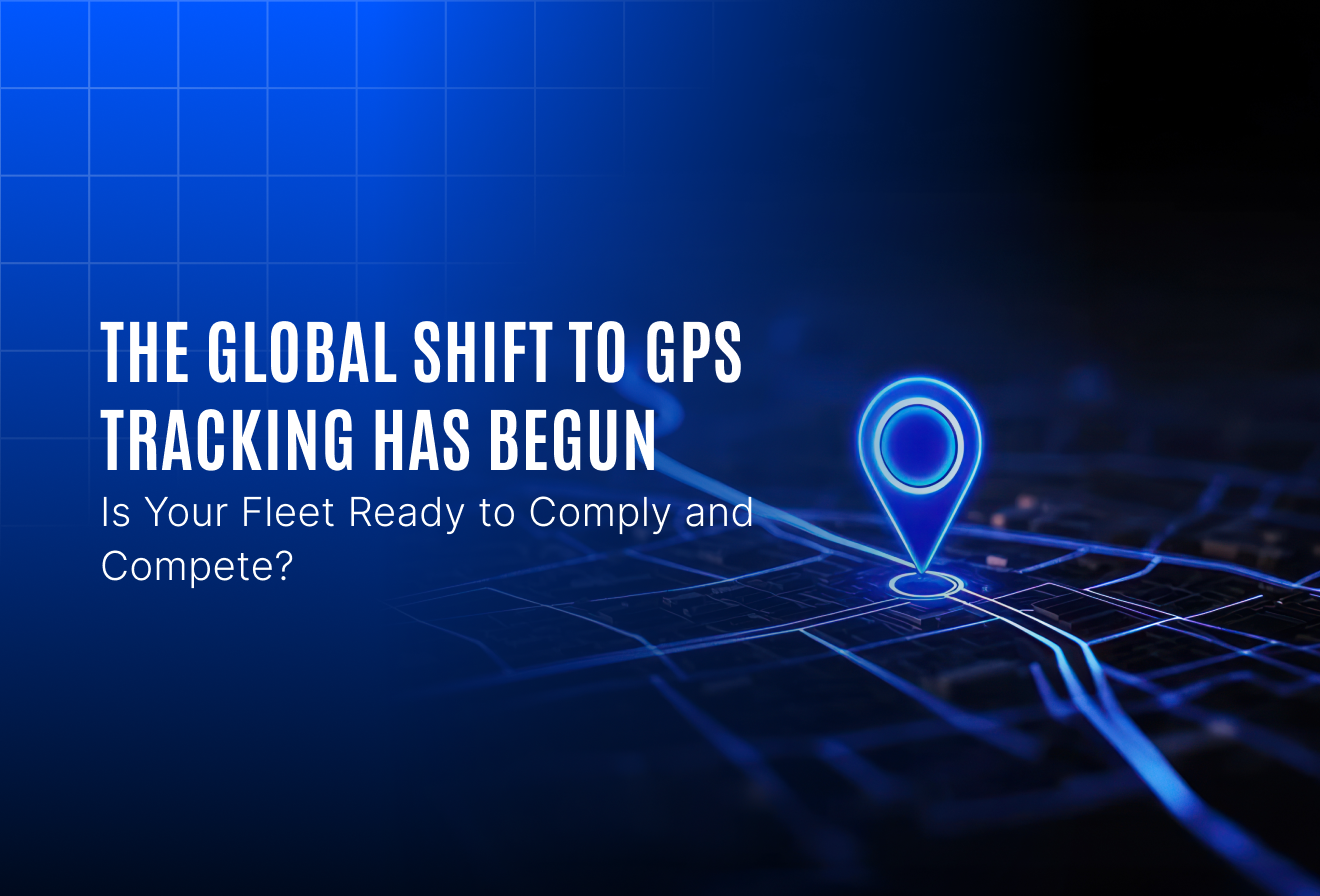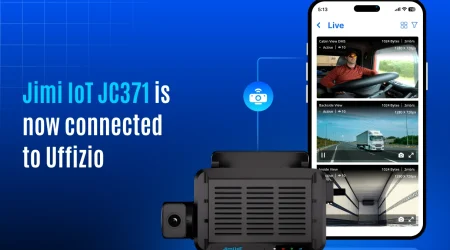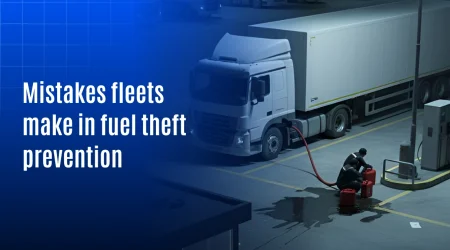GPS Tracking System: Why it’s becoming a global mandate for safer and smarter operations

Once considered an optional feature, GPS tracking system has now emerged as a global standard — and in many cases, a legal requirement. Governments around the world are enforcing new laws that mandate GPS tracking for commercial, public, and sensitive-use vehicles.
This shift is driven by the need to improve road safety, enhance regulatory oversight, reduce operational inefficiencies, and protect assets. And it’s not limited to one region or sector — industries across logistics, construction, public transport, and hazardous goods are already seeing the value and necessity of GPS tracking software in their daily operations.
This blog explores how GPS tracking is becoming mandatory across nations and why forward-thinking businesses are adopting it not just for compliance, but for smarter, more efficient operations.
Why GPS tracking system is becoming mandatory
- Enforcing road safety
Authorities are using GPS tracking to monitor vehicle movement, speed, route compliance, and emergency incidents in real time — making roads safer for everyone. - Ensuring regulatory compliance
By mandating GPS devices in commercial fleets, governments gain accurate data for audits, tax enforcement, and work-hour monitoring. - Preventing theft and misuse
GPS tracking provides real-time visibility of high-value vehicles and assets. Immobilization features can prevent unauthorized usage, while alerts flag suspicious behavior instantly. - Supporting environmental goals
With rising focus on sustainability, many countries use GPS tracking to monitor fuel usage, idling time, and carbon emissions — promoting eco-friendly driving practices.
Countries leading the way in GPS tracking regulations
- India — AIS 140 standard
Commercial and public transport vehicles are required to have GPS devices integrated with panic buttons and cloud connectivity. This is critical for school buses, taxis, and emergency vehicles. - USA — FMCSA ELD mandate
The Federal Motor Carrier Safety Administration (FMCSA) requires Electronic Logging Devices (ELDs) to record driving hours digitally in commercial motor vehicles. - UAE — Mandatory tracking for school buses
To improve student safety, the UAE mandates GPS tracking in all school transportation with real-time access for authorities and parents. - Indonesia — Smart taxation & Fleet monitoring
GPS tracking is required for logistics fleets to ensure compliance with logistics route permits and for integrating with electronic taxation systems. - European union — Tachograph & GPS
EU legislation mandates digital tachographs with GPS capability to ensure driver work-hour limits and cross-border compliance across member nations.
Industry use cases: Who’s benefiting from GPS tracking?
1. Logistics and supply chain
- Real-time vehicle monitoring across regions
- Route optimization based on traffic and delivery time
- Load security and fleet coordination
Result: On-time deliveries, lower fuel usage, and complete shipment visibility.
2. Public transport & School fleets
- Live tracking of buses and schedules
- Geofencing for sensitive pick-up and drop zones
- Panic button alerts and compliance with safety mandates
Result: Safer, trackable transit for passengers and regulatory adherence.
3. Construction and Heavy equipment
- Monitoring asset movement on remote sites
- Preventing theft of equipment and fuel
- Scheduling usage hours for optimized deployment
Result: Higher equipment utilization, lower downtime, and theft prevention.
4. Waste management
- Verifying task completion with route and bin-level tracking
- Reducing fuel waste with optimized collection routes
- Real-time alerts for skipped or missed service points
Result: Efficient city-wide coverage and accountability for municipal contracts.
5. Oil, Gas, and Hazardous Goods Transport
- Real-time alerts for route deviations or unauthorized stops
- Monitoring sensitive cargo with temperature or pressure sensors
- Emergency support integration with control centers
Result: Increased safety and regulatory compliance for high-risk cargo.
Key features of modern GPS tracking system
GPS tracking system has evolved into a complete operational platform that supports every aspect of fleet management. It’s no longer limited to just tracking vehicle location — it’s about creating a smart ecosystem that simplifies monitoring, enhances safety, improves efficiency, and ensures compliance with regulatory standards. From real-time tracking to detailed reports and specialized modules, each feature plays a critical role in making fleet operations more streamlined, responsive, and data-driven.
1. Live Tracking
Live tracking is the heart of any GPS tracking solution. It allows fleet operators to monitor the exact location of every vehicle in real time, ensuring complete visibility across routes and trip progress. This feature not only helps in improving response times but also provides crucial information like vehicle status, speed, movement history, and stoppages — making it easier for businesses to manage on-road assets with precision.
2. Interactive dashboards
Dashboards act as the control center of fleet management software. They bring together all critical information on a single screen, allowing operators to have a quick overview of fleet activities. From real-time vehicle status, trip summaries, and driving behavior insights to pending tasks and upcoming service schedules — dashboards help in faster decision-making and keep day-to-day operations organized and transparent.
3. Alerts and Notifications
Real-time alerts are essential for ensuring operational safety and control. The software allows users to configure alerts for various scenarios like over-speeding, harsh braking, unauthorized vehicle usage, fuel theft, or vehicle entering/exiting geofenced areas. These alerts ensure that fleet managers are instantly notified about any irregular activity, enabling proactive measures to avoid risks and operational disruptions.
4. Reports and Charts
Reports and charts offer an analytical view of fleet performance and resource utilization. Operators can generate detailed reports on trips, fuel consumption, vehicle utilization, maintenance schedules, driver performance, and compliance status. These reports provide actionable insights and historical data analysis that help in auditing, regulatory compliance, and strategic planning for long-term operational improvement.
5. Fuel monitoring
Fuel monitoring has become a crucial module for fleets looking to reduce operational costs. The system tracks real-time fuel levels, records refueling or drainage activities, detects sudden drops indicating theft, and analyzes consumption patterns. With accurate fuel data available, operators can control wastage, prevent fraud, and ensure fuel efficiency across all vehicles.
6. Video telematics
Video telematics provides visual proof and enhanced monitoring of fleet activities. It supports in-cabin and road-facing cameras that capture events like accidents, unsafe driving behavior, or external incidents. This module helps in ensuring driver safety, reducing false claims, and improving overall driving discipline through visual evidence.
7. Tyre management
Tyre management ensures better safety and optimized performance of vehicles by tracking tyre pressure, temperature, and tread depth. The system helps prevent accidents caused by tyre failures, increases the lifespan of tyres, and ensures cost-effective maintenance by monitoring tyre health in real time.
8. Job and Route management
This module enables efficient task allocation and route optimization. It allows operators to assign jobs to drivers, plan delivery routes based on traffic or distance, and track job completion in real time. This feature supports better customer service, reduces delivery delays, and improves resource allocation across the fleet.
9. Temperature monitoring
Temperature monitoring is essential for fleets dealing with sensitive or perishable goods. The system records real-time temperature inside storage compartments, sends alerts for deviations, and ensures product safety during transportation — especially in industries like food, pharmaceuticals, or cold chain logistics.
10. Load monitoring
Load monitoring helps in managing vehicle weight and cargo safety. It records weight variations during trips, prevents overloading, and ensures compliance with legal weight limits. This module is critical for construction, mining, and logistics fleets where cargo management directly affects operational safety and regulatory compliance.
Modern GPS tracking software is packed with a range of additional features that go beyond the basics — offering fleet operators a complete toolkit for smarter operations. From expense management, maintenance scheduling, compliance reporting, to integration capabilities with external systems — the software is built to adapt to different industries and operational challenges. Every feature, whether visible on the dashboard or working silently in the background, plays a critical role in making fleet management more efficient, transparent, and future-ready.
Final thoughts: From optional to essential
As GPS tracking becomes a legal requirement across various nations, fleet operators are realizing that compliance is only one piece of the puzzle. The real value lies in how the technology transforms day-to-day operations — offering data-driven decision-making, improved accountability, and safer transport systems.
Whether you’re operating a logistics network, managing a public fleet, or transporting sensitive goods, investing in a robust GPS tracking system is no longer optional — it’s essential for staying compliant, competitive, and in control.




